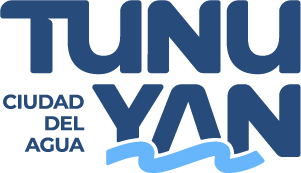But as the activity level varies, the cost to accommodate the additional activities may increase or decrease disproportionately. One way to analyze fixed and step costs is to use CVP analysis, which examines the relationship between cost, volume, and profit. CVP analysis can help you determine the break-even point, the margin of safety, the contribution margin, and the operating leverage of your business. To use CVP analysis, you need to separate your total costs into fixed and variable components. For step costs, you need to use the relevant range and the appropriate variable cost per unit for each step.
For instance, this company incurs $40,000 of expenses if it produces 15,000 units or 40,000. Step costs are costs that change in total amount by a constant amount when the level of output or activity changes by a certain interval or step. For example, if a business hires an additional supervisor for every 10 workers, the supervisory cost is a step cost that increases by a fixed amount for every 10 workers added.
Activity Increases
On the other hand, step costs can also decrease when the level of activity becomes low enough to cause the decrease. Understanding step costs helps the business in maintaining the highest level of profitability. A second shop floor supervisor, along with additional support personnel, would be necessary if demand for the product increased to 2,001-4,000 units per day. Therefore, the total salary costs of shop floor supervisors vary with changes in product demand.
- One machine costs $15,000 in total, but 1,000 pens generate $20,000 in revenue (1,000 x $20).
- As such, they propose to upper management to increase production by 500 units.
- This cost level remains constant up to 65,000 units until it steps up to the next range.
- Step costs change disproportionately when production levels of a manufacturer, or activity levels of any enterprise, increase or decrease.
When we plot a step cost on a graph, it will show a stair-step pattern (which is probably why we refer to it as a step cost). Another example would be sales commission, where it increases or decreases depending on the level of sales. Note that the surviving spouse anywhere in the U.S. would be entitled lifetime learning like any other heir to the stepped-up basis on inherited assets previously owned solely by the deceased. Tax basis is the cost of an asset to its owner, as calculated and adjusted for tax purposes. It is used to assess capital gains as well as depreciation, amortization, and depletion.
Step costs
If it’s just a small increase in volume, management may try to squeeze out extra productivity from existing operations, instead of incurring stepped-up costs. From a production cycle standpoint, costs per unit tend to decrease as the number of units produced increase until the occurrence of a step variable cost. In such a situation, production capacity limits may have been exceeded. Step costs occur when companies move beyond the limits of their fixed cost structure. Fixed costs are typically fixed only for a certain range of business or production. Step costs typically only occur when a company expands or meets its production capacity.
Accounting Terms: W
In this case, the additional machinery, personnel and production space may total an additional $1 million per year. Fixed costs differ from variable costs, which change with production levels. For example, if you are a bakery, the more loaves of bread you bake, the more flour you will need to purchase each month.
Step Costs: Definition, Significance, and Examples
In the first nine months of 2023, Unity reported a net loss of $572 million on $1.58 billion in revenue. Boosting revenue will help the cause, but layoffs will be more impactful in the near term. Once the one-time charges for severance and other items pass, cost savings should be significant with roughly 1,800 employees set to depart. For example, it might need to let go of some employees to save on labor costs when production slacks down. An increase in revenue doesn’t always necessarily lead to an increase in profits.
Step 3: Negotiate your bill
For example, the cost of materials increases as the level of production goes up. As seen in this example, the cost doesn’t increase linearly with the number of calls. Instead, costs rise in “steps” with significant jumps when the capacity of an office location is exceeded.
When a manufacturer’s production levels or the activity levels of any enterprise change, these costs change disproportionally. A step cost is a cost that does not change steadily with changes in activity volume, but rather at discrete points. The concept is used when making investment decisions and deciding whether to accept additional customer orders. The main difference between fixed and step costs is how they respond to changes in output or activity level. Fixed costs remain constant in total amount, while step costs change in total amount by discrete increments. This means that fixed costs per unit decrease as output increases, while step costs per unit remain constant within each step but change across different steps.


